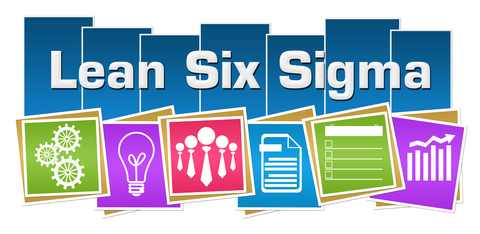 Choosing a perfect strategy for your business is always a debatable and important issue for business houses. Among many strategies, the two most popular are Lean and Six Sigma.
Choosing a perfect strategy for your business is always a debatable and important issue for business houses. Among many strategies, the two most popular are Lean and Six Sigma.
Lean, the all-time favorite methodology has now entered other industries from the floors of manufacturing units such as the Lean HR method.
If we are more concerned about making processes efficient and with lead time reduction, Lean is the right choice for us whereas if we wish to concentrate on cutting down defects, Six Sigma should be our choice.
It is better to say that both Lean and Six Sigma are useful methodologies to improve processes, lead time, and finally your bottom line.
To know more about these strategies let’s discuss them one by one first and then we’ll compare them for concluding this article.
The Lean Method
The Lean methodology begins with proper waste management and cost-cutting in manufacturing processes and products. This may be achieved by controlling/avoiding the following eight fields:
– Inventory: Excessive stock in hand
– Waiting, in the manufacturing process, on machinery and supply chain
– Overproduction: Management of unused bulk products
– Processing: Lengthy and cumbersome manufacturing process
– People, who are not working with full energy and zeal
– Transporting: Damages to the material due to unnecessary, excessive, and avoidable transportation of inventory during the handling and manufacturing process
– Excess motion of manpower to increase work efficiency
– Defects in the final products
Hence if we wish to be “Lean and Mean”, we have to control the above waste areas to improve our efficiency and our profits.
Six Sigma
Six Sigma is not only for quality control and defects’ minimization as is generally assumed. In a broader spectrum, this methodology is a scientific approach to minimizing defects and improving the manufacturing process by using statistical data and techniques of project management.
In this methodology, first, the problem that needs to be improved is defined and then the experts look at the process and analyze the problem by using data analytic techniques. Further, they improve, control, and fix those problems. Hence the acronym DMAIC ( Define, Measure, Analyze, Improve, and Control) very well defines the Six Sigma methodology.
There’s another framework in Six Sigma, DMADV, which is more concerned with the design process. DMADV incorporates Design, followed by Measure. Next is the Analyze phase, which is followed by Design and finally Verify. The approach helps optimize the design of a product or service.
Lean vs Six Sigma or Lean and Six Sigma
Instead of focussing on the Lean vs Six Sigma debate, we can use Lean and Six Sigma methodologies together for better results. This new methodology is known as LSS (Lean Six Sigma). This strategy gives the best results in minimization of defects and lead time shortening if applied correctly and in a balanced manner.
In brief, these two methodologies are the two faces of a coin that complement each other by minimizing process costs and improving outputs and bottom line.
Lean Six Sigma focuses on the team as a whole, and aims to reduce defects and waste— combining the best of both approaches. The strategy has managerial principles too and harnesses DMAIC steps and tenets. Today, it’s a powerful game-changer for many businesses globally.
Comparing Lean and Six Sigma
- Lean is a methodology that minimizes waste in the production line while Six Sigma emphasizes the quality of products.
- Lean ideology focuses on the flow process while Six Sigma focuses on the problem.
- The main purpose of the Lean strategy is the removal of waste while Six Sigma believes in variability removal from the processes.
- Lean methodology is based on visuals while Six Sigma is based on a scientific approach (mathematics and statistics.)
- The motto of Lean is improvising production by increasing process efficiency while Six Sigma’s aim is a perfect quality product that fulfills customers’ requirements.
- Toyota developed Lean while Motorola has brought about Six Sigma.
Conclusion
Both the strategies work great for an organization. Both of the methodologies, if applied either individually or together, will result in a positive outcome like minimization/ reduction of the wastage, defects, and variation in processes.
They also minimize cycle time, increase customer satisfaction, improve product quality, and minimize product and process costs with excellent throughput.
We also discussed how an amalgamation of both techniques to minimize waste and defects together in what is called the Lean Six Sigma approach can work wonders for businesses.








No responses / comments so far.